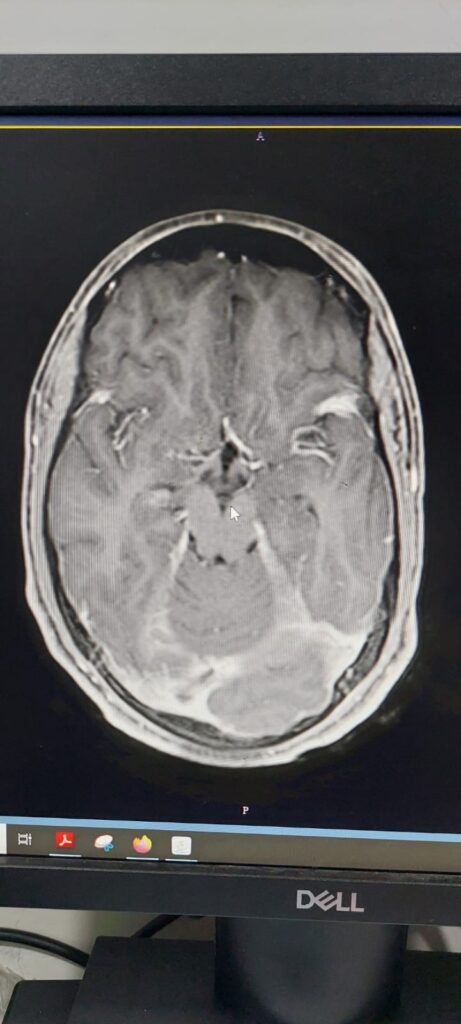Dr varsha v s / Dr Praveena bhaskar
,DrC Jayakumar
Seventeen year old boy with h/o ITP diagnosed 6 months ago, on eltrombopag and steroids presented with severe headache , dizziness and an episode of vomiting of 1 day duration. He had h/o persistent thrombocytopenia and was started on Romiplastin 3 days before the onset of symptoms.
On examination he was drowsy. Vitals were stable.
Labs showed thrombocytopenia with normal PT INR.
CT plain brain done showed hyperdensity along the transverse, sigmoid and straight sinuses s/o dural venous thrombosis.
Differentials considered were
1. Romiplastin induced thrombosis
2. APLA
3. SLE
He was started on anticoagulants.
Emergency MRA/ MRV was done which showed evidence of venous sinus thrombosis involving staright sinus with extension to torcula, left transverse, sigmoid sinus and straight sinuses .
Asperger Rheumatology consultation APLA, SLE workup done were normal.
So drug induced dural venous thrombosis was suspected.
Pulse steroids were given for 3 days. Treatment for severe pain was given with oral paracetamol
After that his headache has subsided & his platelet counts has also improved. He was started on Tab mycophenolate mofetil and plan is to discharge to keep on regular follow up.
Discussion:
Cerebral venous sinus thrombosis (CSVT) in childhood is a rare disorder with multifactorial etiology and neurologic sequelae apparent in up to 40% of survivors and mortality approaching 10%.
Risk factors: Include common childhood illnesses such as fever, infection, dehydration, and anemia. Acute and chronic medical conditions such as congenital heart disease, nephrotic syndrome, systemic lupus erythematosus, and malignancy.
Clinical Features : Seizures (focal, generalized), depressed level of consciousness and coma, lethargy, nausea, vomiting, headache, visual impairment (transient obscurations, reduced acuity, blindness), Papilledema, hemiparesis, hemisensory loss, ataxia.
Pathophysiology: Mechanism of romiplastin associated venous thromosis remained unclear but might associate with platelet activation.
Investigations: The main diagnostic investigation is imaging: CT and MRI brain.
Management: Anticoagulation is the main line of management after stabilisation of the patient. Usually treated with parenteral unfractionated heparin, subcutaneous low molecular weight heparin (LMWH).


